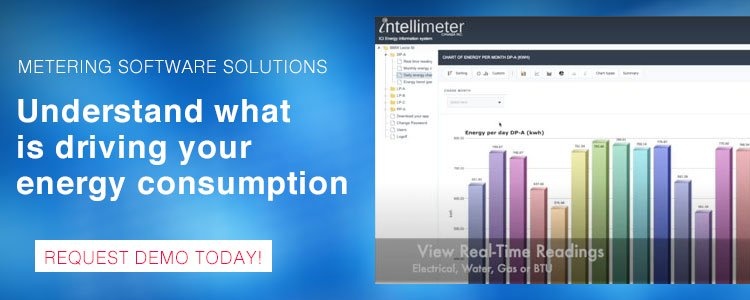Submetering systems in residential buildings, commercial complexes, or industrial or institutional facilities, can only be successful when they are managed well. A clear understanding of why a metering system needs to be implemented is critical to reaping its benefits.
Property Managers and Businesses Owners will benefit from accepting the idea that energy efficiency can improve their bottom line. Once the role of submetering in reducing costs and improving efficiency is recognized then combinations of tools, practices, and technologies can be applied to drive energy improvements. There are many factors that contribute to successfully enjoying the benefits of a submetering system; To start off, here are a few points to keep in mind.
Establish Goals and Objectives
Establishing the goals and objectives is crucial. These goals may include:
- Verification of project results to make sure that all the regulations and requirements that were met delivered the expectations.
- Cost Allocation; Identifying specific department, line, or area costs in the facility
- Equipment monitoring and energy performance; anticipate the needs for failing equipment to save on costs, constant repairs, or re-purchases.
- Billing Tenants or individual owners and obtaining a better understanding of the energy consumption of the building.
INVEST UP-FRONT
The time you spend in planning and involving the stakeholders in the project pays dividends in the future. Recognizing what the real needs are and what the "nice to have" items are is as important as identifying the type of information required from the submetering system and how you plan to automate the reading of the meters,
Ensure Appropriate Resources
Ensure that there is an available budget for purchasing the right equipment that meets your needs, At times We see specifications for equipment that include all available options and features, when the customer will only need a fraction of them for a fully functional system, remember the difference between needs and wants.
Resources are not just financial, hiring, engaging, and maintaining the right people for managing the system or the relationship with your billing company is crucial to a successful implementation.
Aim for Utility Resource Efficiency
Aim for utility resource efficiency by prioritizing and securing the most important data for energy consumption, establish minimum criteria, and look for opportunities to improve. Consider submetering equipment like chillers, pumps, boilers, and lighting systems and apply energy-saving strategies like load shifting in time of use jurisdictions.
Select Compatible Equipment
Selecting the right submetering system with open protocols and no recurring fees for data, that integrates with other existing systems is an addition that fully supports your metering objectives, and makes upgrades or replacements less costly and easier. These will ensure that the system functions more efficiently while leaving it ready for improved technology that may come in the future.
Integrate And Calibrate
Once the submeters have been installed, there must be appropriate integration with the building automation systems. For some, the metering information is not only used for energy management or for billing but also for monitoring, ensuring that the system integrates with everything in the building is important.
IN Closing;
Like any other project, the more you know and plan ahead, the easier it will be to manage once it is built. Ensure you pick the right partner for your submetering needs, the investment pays for itself if managed properly.


